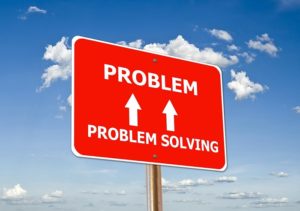- MN ABE Connect
- Archive
- Numberless Word Problems: Creating Opportunities for Better Thinking
Numberless Word Problems: Creating Opportunities for Better Thinking
Amber Delliger, Numeracy CoordinatorAdult numeracy expert Connie Rivera is coming to Minnesota for Math Institute in early May! Read on for a preview of Connie’s math teaching tips, and please plan to join her in person on May 5. Registration information can be found at the end of this article.
Around the state, teachers in classrooms from low-level ESL to Adult Diploma are working to identify ways to find and develop meaningful applications of the CCRS content standards. Most word problems available in textbooks are formulaic, provide way too much information to students (we lovingly call that ‘being too helpful’), or aren’t real-world types of problems. Who really buys 30 watermelons anyway?!
 We recognize that it is difficult to find word problems that are authentic to the types of problems our students will have to navigate in other educational settings, on the job, or at home. And even when we do find word problems, our students often lack the problem-solving strategies to navigate the word problems successfully on their own, whether due to language barriers, content gaps, or math anxiety.
We recognize that it is difficult to find word problems that are authentic to the types of problems our students will have to navigate in other educational settings, on the job, or at home. And even when we do find word problems, our students often lack the problem-solving strategies to navigate the word problems successfully on their own, whether due to language barriers, content gaps, or math anxiety.
Connie Rivera, President of the Adult Numeracy Network, has compiled a list of six strategies and accompanying resources to improve the ways word problems are utilized throughout ABE and ESL classes. In her article, Rivera identifies small ways to adapt the word problems provided in texts to promote deeper and more flexible thinking in level appropriate ways.
Numberless word problems
For example, Strategy 2: Numberless Word Problems and Graphs highlights the need to help students develop Math Practice 1: Persevere in Problem Solving by removing numbers from word problems. Students often grab the first numbers and keywords they see and jump into computing an answer, without truly stepping back and making sense of what the problem is actually asking. Taking away the numbers requires the students to start thinking critically before they have access to the numbers. Teachers can then give students numbers, or the students can identify numbers on their own, and then work to solve the problem with the appropriate technique.
Here is a sample of a numberless word problem that progresses over time:
- Some women went biking. A few women stopped to get a drink.
You could ask your students if this is problem. Is there something to solve? Can they identify all the different problems they could solve in this scenario? - Some women went biking. 3 women stopped to get a drink.
What do students notice now? Is it a problem? Can they solve it yet? Are there any new problems they could solve with this information? - 8 women went biking. 3 women stopped to get a drink. How many women kept biking?
What changed this time? Is it a problem? Can they solve it now? What is the problem asking? How would they solve it?
Numberless word problems are only one of Rivera’s suggestions to provide students at all levels with more meaningful opportunities to make sense of what a problem is asking and identify ways to solve the problem that could be applied to other situations. These strategies can be used at all levels and in any kind of setting. To read more, check out her article Changing How Problems are Presented on the Adult Numeracy Center at TERC blog.
Learn more at Math Institute on May 4-5, 2017!
To learn more about word problems and ways to better use them in the CCRS-aligned classroom, join us at Math Institute on May 5! Ms. Rivera will be leading a hands-on workshop designed to empower teachers to evaluate problems in textbooks and identify high-value actions to improve their CCRS alignment and make them truly problems worth solving.
Need an introduction to the CCRS Math standards? We will be offering an all-day CCRS Math Foundations workshop on May 4, similar to what is offered at Summer Institute. During that training you’ll get to learn the basic shifts in math education as identified in the CCRS, how to read the standards and identify the level of standards your students need, and what the Mathematical Practices look like for students at all levels.
Newsletter Signup
Get MN ABE Connect—the official source for ABE events, activities, and resources!
Sign UpArticle Categories
- ABE Foundations/Staff Onboarding
- ACES/Transitions
- Adult Career Pathways
- Assessment
- CCR Standards
- Citizenship
- COVID-19
- Cultural Competency
- Digital Literacy/Northstar
- Disabilities
- Distance Learning/Education
- ELA
- Equity/Inclusion
- ESL
- HSE/Adult Diploma
- Listening
- Math/Numeracy
- Mental Health
- Minnesota ABE
- One-Room Schoolhouse/Multilevel
- Professional Development
- Program Management
- Reading
- Remote Instruction
- Science
- Social Studies
- Speaking/Conversation
- Support Services
- Teaching Strategies
- Technology
- Uncategorized
- Volunteers/Tutors
- Writing